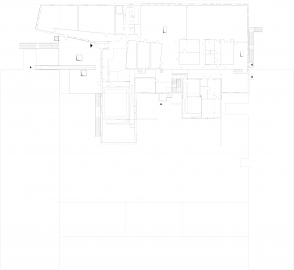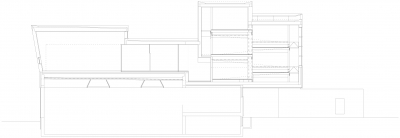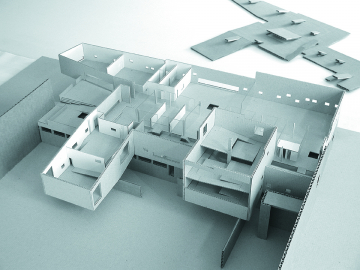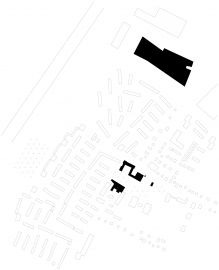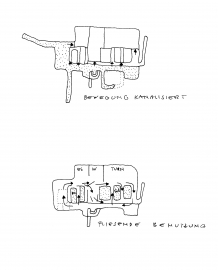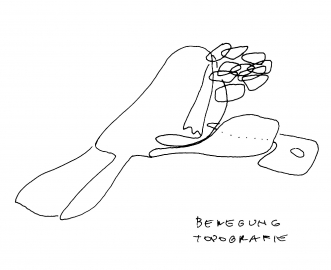Municipal After -School Club
Municipal after-school club in Salzburg-Taxham, Austria
To compensate, spatial quality and an intelligent strategy were placed at the centre of the newly competed extension for the school complex consisting of an after-school club. For their first project, the Salzburg architects Maria Flöckner and Hermann Schnöll placed a striking timber hat on the sports hall tract, improved the schoolyard instead of building over it, while also linking generous spaces with environmental considerations and the promotion of economic efficiency. The links to the general public around the building are the outset of an improvement in the quality of the outdoor space of Taxham that is yet to become more intense. (by Norbert Mayr)
Rather than using the planned site, we designed the new after-school club as a "wooden cosy" on top of the exisiting single-storey gymnasium. This avoided using valuable playground space and achieved an optimal solution for the overall complex (see Construction and Energy).
The effect of a large wooden (roof) construction in this widely visible location is enhanced by structures (living-areas) projecting beyond the existing building.
The "cosy"offers ample interior space, reflected in the exterior form. The projecting parts provide shelter for social activities, and the overall form establishes communication with the urban surroundings.
The roof interior recreation area is a spacious hall allowing a wide variety of physical exercise and containing transluent zones and strongly differentiated light conditions. The peripheral living-areas are structured to suit each age-group. For the older groups, an extended area was created, with nine raised platforms, so that individual rooms can be arranged.
The shell, consisting of prefabricated, well-insulated, very light wooden elements, puts little load on the existing gymnasium beneath. The façade elements are panelled on the exterior with three-ply larch board, untreated with chemicals, and on the interior - like the roof elements - with birch plywood. Translucent room-dividers of unpolished glass, fixed between birch plywood and composition flooring, retain the spacious quality.
Apart from the quality of the shell, low ventilation heat-loss and structural form, the essential characteristic of the technology is the great reduction in heat-loss from the existing gymnasium, achieved by the superstructure. The warm-air heating system is equipped for waste-heat recovery, and the network of ducts, open to view, runs through the entire structure. Thus the aim of a zero-cost building, as regards energy and running costs, has been achieved.


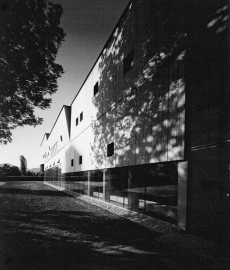

.jpg)

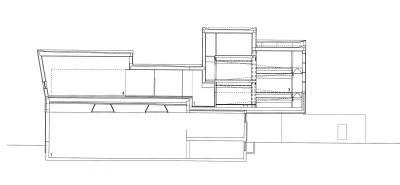
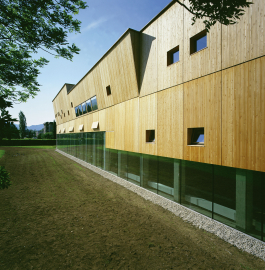 © Stefan Zenzmaier
© Stefan Zenzmaier
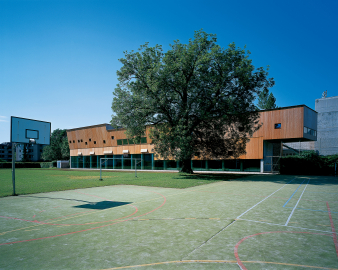 © Stefan Zenzmaier
© Stefan Zenzmaier
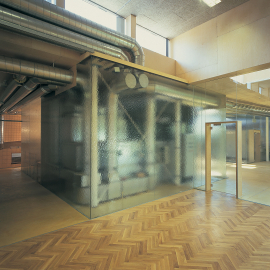 © Stefan Zenzmaier
© Stefan Zenzmaier
 © Stefan Zenzmaier
© Stefan Zenzmaier
